If you’ve ever fumbled with Word docs, endless email threads, or outdated PDFs just to propose, you’re not alone. In today’s fast-paced business world, proposal software has become essential for closing deals faster, collaborating more effectively, and personalizing your pitch at scale.
But with so many proposal management software tools out there, how do you choose the best one?
Let’s dive into the details so you can choose the right proposal automation software for your team.
What makes the best proposal software?
Not all proposal tools are built the same. While some offer basic templates and document sharing, others go far beyond with AI-powered features, real-time collaboration, and native integrations that save teams hours each week. McKinsey, in this read, elaborates on the importance of AI in procurement.
Here’s what to look for in a top-tier proposal management software:
- AI-powered content suggestions
Save time with intelligent content recommendations based on opportunity type, industry, and past wins. - CRM and CPQ integration
Auto-fill contact and deal data from your CRM and link up with configure-price-quote (CPQ) tools to avoid pricing errors and back-and-forth. - Centralized content library
Reuse winning proposal sections across deals while maintaining version control and brand consistency. - User permissions and workflow approvals
Define who can view, edit, or approve content to reduce risk and improve internal collaboration, especially when sales, legal, and marketing are involved. - Real-time collaboration
Work on proposals simultaneously with team members and eliminate the chaos of email threads and conflicting drafts. - Proposal tracking and engagement insights
Know exactly when a buyer opens your proposal, what sections they view most, and how often they return so you can follow up strategically. - Security features and compliance
Especially important for regulated industries, ensure your data is protected with encryption, secure access, and audit trails.
Why proposal automation software matters more than ever
Proposal creation is no longer just an admin task; it’s a critical part of your sales cycle. Manual methods slow things down, introduce avoidable errors, and often lead to missed opportunities. In fast-moving sales environments, proposal automation software has gone from a nice-to-have to a must-have.
The best platforms do more than generate documents; they transform your sales operations. Here are some of the ways they do this:
- Speed up response time without sacrificing quality
- Help scale personalization across high-volume deals
- Empower reps to focus on closing, not formatting
- Ensure legal, brand, and messaging alignment across the board
- Streamline quote generation, approvals, and proposal tracking from draft to sign-off
- Provide visibility and analytics so teams know what’s working and what’s not
Whether you’re an AE juggling multiple deals or a proposal manager owning complex RFPs, the right tool eliminates bottlenecks and reduces the need for endless back-and-forth. With automated workflows, role-based user permissions, and built-in security features, modern solutions give you both speed and control, two things that directly impact your win rate.
Choosing the best proposal software: 5 proposal tools, 5 workflows
Proposal software isn’t one-size-fits-all. What works for a startup racing through sales cycles might overwhelm an enterprise team juggling complex compliance requirements. That’s why choosing the best proposal software starts with understanding your workflow, not just the feature list.
Here’s how to think about it:
If your team thrives on automation and lives inside Slack, Drive, and Notion, you’ll need a modern bid response platform that integrates seamlessly with your existing tech stack and eliminates repetitive manual work. Proposal automation isn’t just a time-saver; it’s a productivity multiplier.
If your proposals double as client-facing presentations, design and interactivity matter; look for a bid management tool with visual polish, drag-and-drop editors, and customizable templates that make every proposal feel tailor-made.
If you handle RFPs, RFIs, and security questionnaires on a weekly basis, proposal management software with deep content search, version control, reuse libraries, and approval workflows is non-negotiable. These features keep your team organized, reduce errors, and ensure compliance across complex submissions.
We’ve shortlisted five proposal software platforms, each built for a different kind of team:
- SiftHub – The AI-powered bid management platform for enterprise presales teams that auto-builds proposals from your knowledge base and centralizes your response workflow.
- Proposify – For sales teams that care about branding, layout, and visual polish, great for pitch-ready proposals.
- Qwilr – Ideal for web-based, mobile-optimized proposals that embed video, pricing tables, and interactive calendars.
- Better Proposals – Built for speed and simplicity, perfect for smaller teams working fast through short sales cycles.
- Responsive.io – Tailored for enterprise teams managing compliance-heavy RFPs across global departments and product lines.
The right proposal software solution should match the way you sell, not force you to adapt.
So before you commit, think less about features and more about fit. Look at how your team collaborates, how you engage buyers, and how often you’re responding to complex RFPs. Your workflow is the real decision-maker.
1. SiftHub – smart proposal automation for modern sales teams
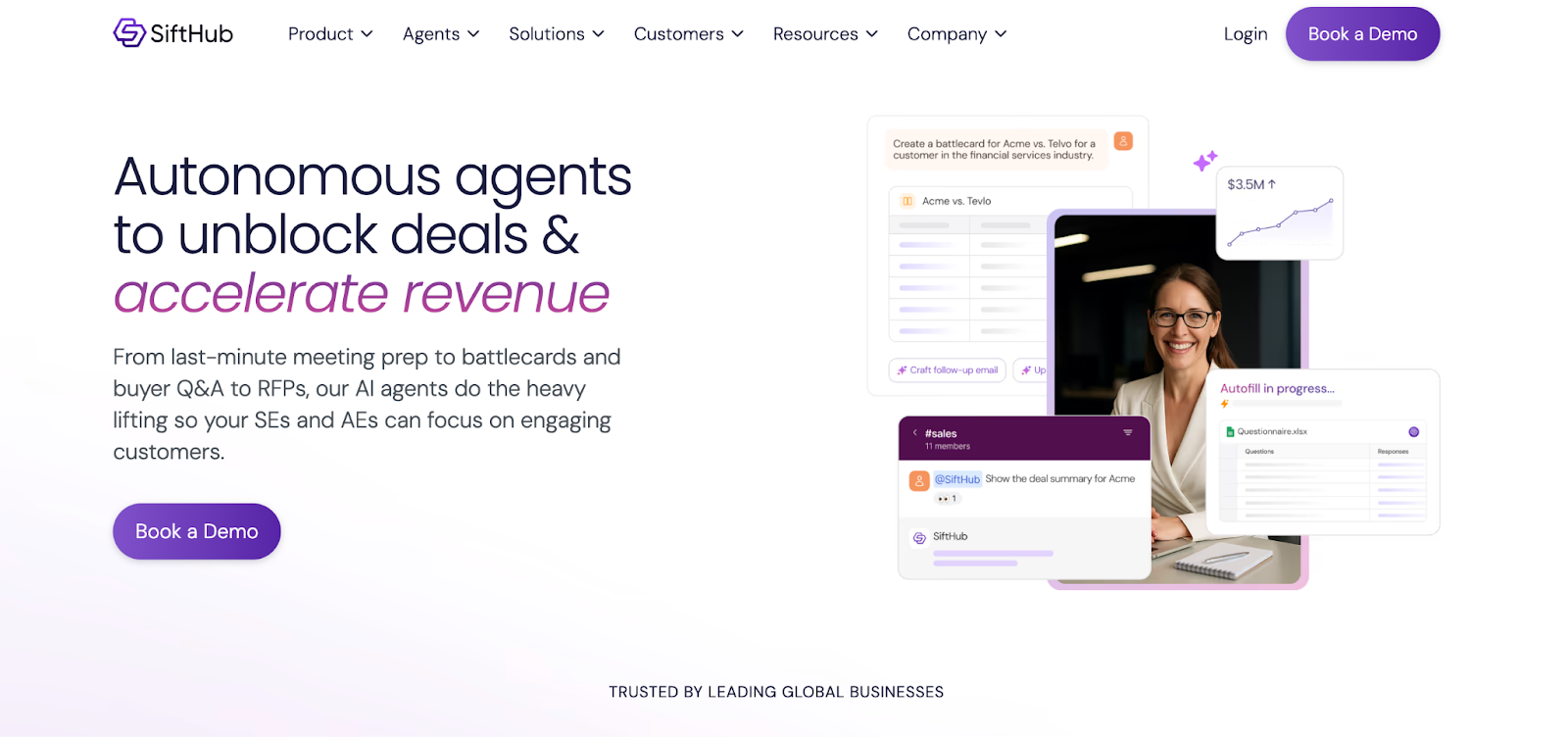
SiftHub isn’t just a proposal software; it’s an AI proposal management platform built for scale. From proposal creation to seamless collaboration, SiftHub brings sales, marketing, and legal together in one unified workflow.
Why SiftHub stands out
Suppose you’re tired of jumping between CRM, Google Docs, and Slack to finalize a proposal. In that case, SiftHub solves that with proposal automation designed for real-time collaboration, content reuse, and approval workflows. It’s especially beneficial for presales teams and sales teams handling multiple complex deals simultaneously.
Best features
- Auto-fill capabilities using knowledge from your CRM, website content, internal drives, and documents, as well as sales enablement platforms for faster proposal generation.
- Centralized content library for reusing top-performing sections of your proposal
- Personalizes answers to hundreds of questions based on the prospect, industry, deal stage, and more, and writes in over 50 languages.
Pricing
SiftHub offers flexible plans based on the number of transactions or user count. Pricing is available on request (customized based on your usage needs).
2. Proposify – customizable proposal templates & design-focused builder
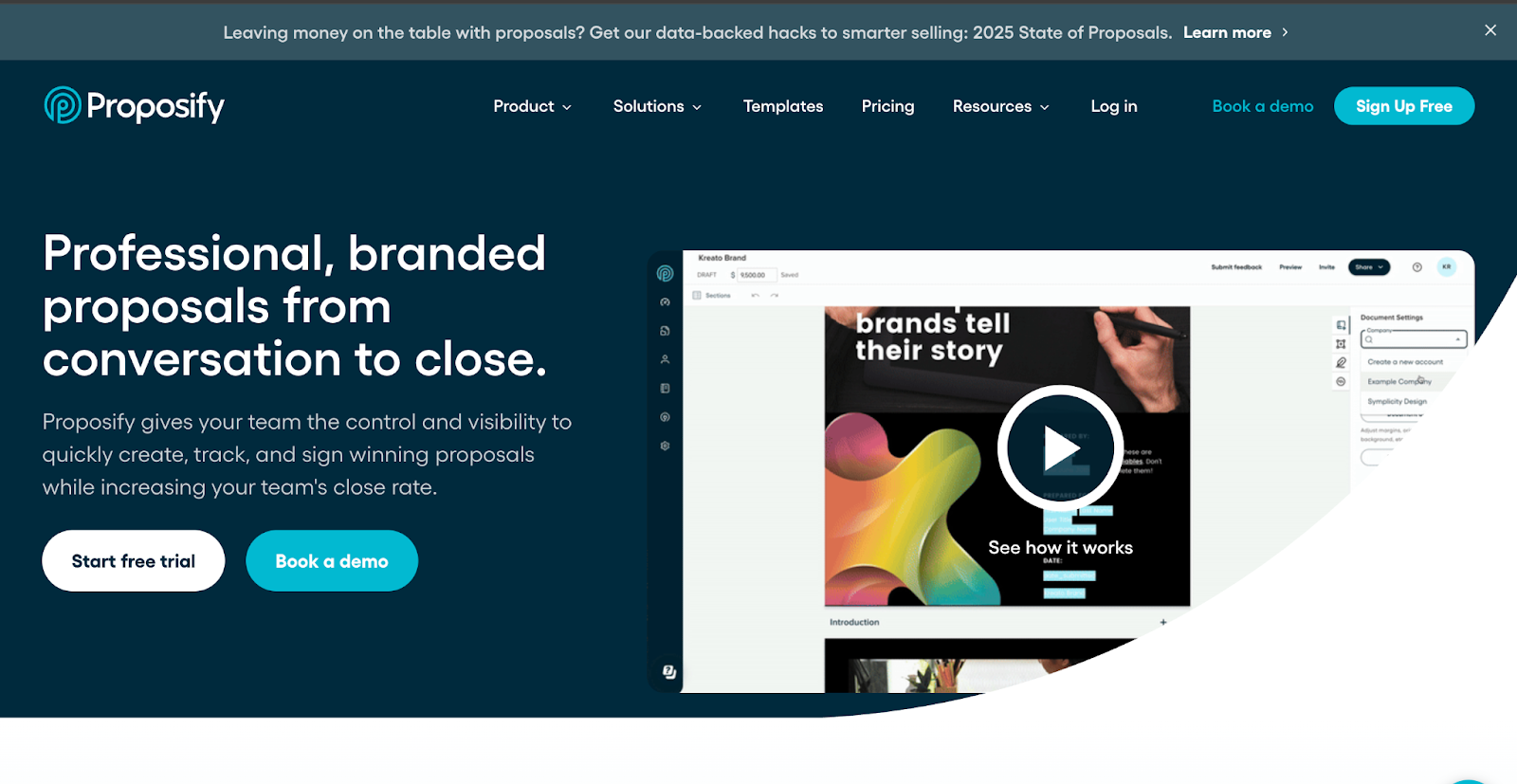
Proposify is a user-friendly online proposal software that gives you complete control over how your proposals look. If brand consistency is important to your company, Proposify offers one of the most visually polished proposal apps on the market.
Why Proposify stands out
It combines beautiful design with robust proposal management software capabilities. With drag-and-drop features and a strong template library, it’s a great option for agencies, freelancers, and growing sales teams.
Best features
- Beautiful, ready-to-use proposal templates
- Rich media support, including video and pricing tables
- Interactive proposals for increased client engagement
- CRM integrations and automated reminders
- Detailed tracking and proposal performance insights
Pricing
Starts at $49/user/month. Team pricing is available for larger organizations.
3. Qwilr – interactive proposals
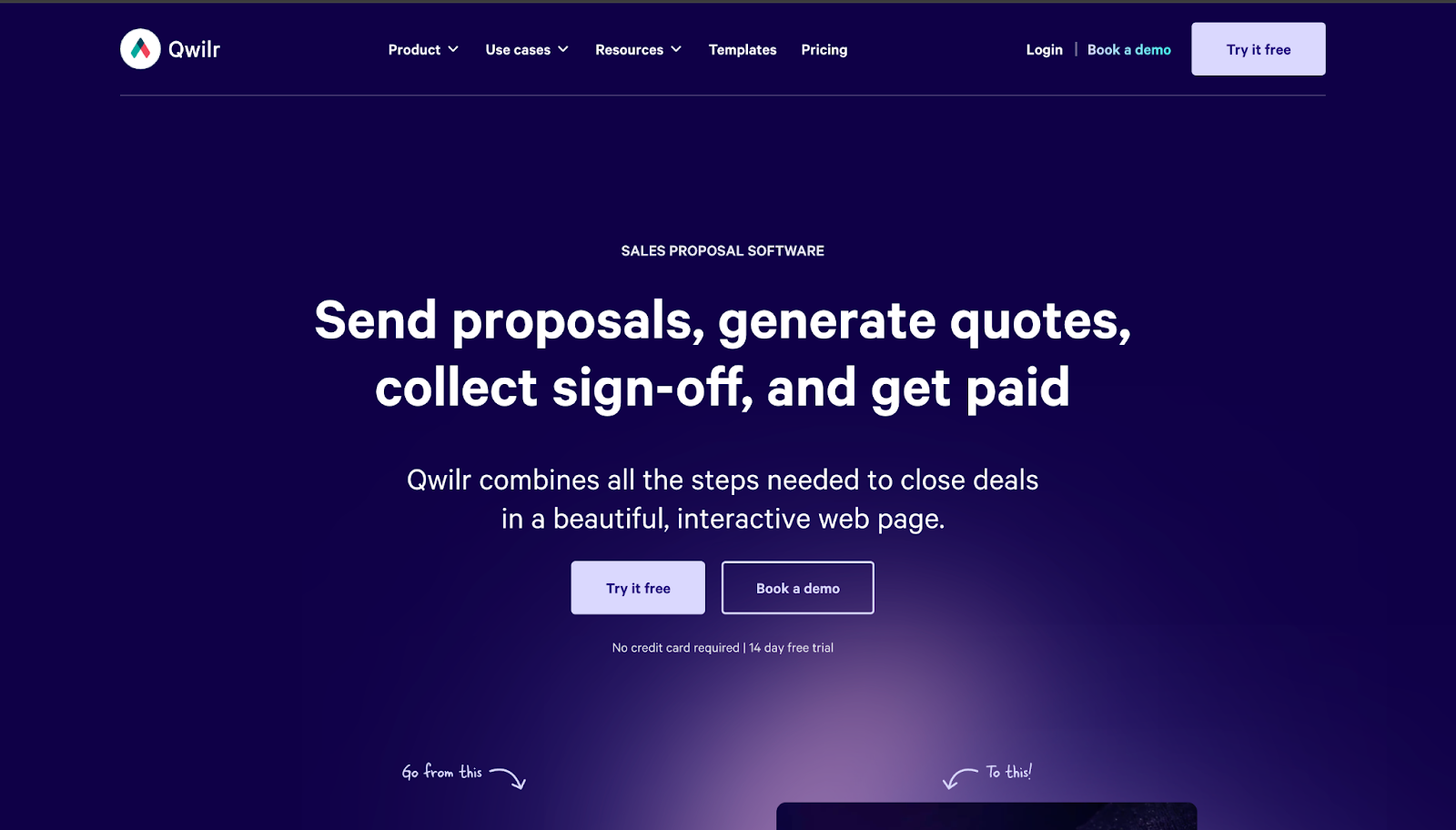
Qwilr brings a fresh take on business proposal software by turning boring PDFs into interactive, web-based experiences. Ideal for modern sales teams that care about presentation, Qwilr’s proposal platform makes every pitch feel like a polished microsite.
Why Qwilr stands out
With built-in e-signature, real-time tracking, and CRM integration, Qwilr enables faster deal closure while giving your prospects a memorable experience. It’s perfect for SaaS, tech companies, and agencies that value sleek, responsive design.
Best features
- Web-based proposal builder with modern layouts
- Instant updates with version control and document tracking
- Seamless Salesforce integration, HubSpot integration, and CRM sync
- Embedded videos, interactive pricing tables, and digital signatures
- Fully branded experiences with custom branding
Pricing
Starts at $35/user/month. Qwilr pricing varies based on volume and usage tiers.
4. Better Proposals – Clean, fast, and focused on conversion

Better Proposals focuses on helping you close deals faster. It’s one of the best proposal automation software options for small businesses, agencies, and freelancers looking for speed, simplicity, and conversion-optimized design.
Why Better Proposals stands out
This tool is loved for its no-frills interface and laser focus on turning sales proposals into signed contracts with minimal effort. It includes features like an automated proposal generator, reusable content blocks, and follow-up reminders to ensure nothing falls through the cracks.
Best features
- Mobile-responsive templates with built-in e-signature
- Content library to store and reuse your best proposal sections
- Smart proposal tracking with analytics
- CRM integration and api integrations
- Secure sharing, audit trails, and HIPAA compliance
Pricing
Starts at $19/user/month. Advanced plans offer additional features like custom branding and third-party integrations.
5. Responsive.io – proposal & RFP Management

Responsive.io is often used by enterprises that handle high volumes of RFPs, security questionnaires, and proposal workflows.
Why Responsive.io stands out
It offers a broad set of features for managing proposal content, team collaboration, and compliance requirements, though it may feel complex for leaner teams.
Best features
- AI-assisted proposal generator with content recommendations
- Role-based user permissions and collaboration tools
- Integrations with Salesforce, CRMs, and marketing platforms
- Built-in proposal tracking and audit trails
- Security and workflow controls for enterprise environments
Pricing
Custom pricing based on the number of users, integrations, and content needs.
How to choose the best proposal software for your team
Now that we’ve explored the top proposal software tools available in 2025, how do you decide which one fits your needs?
The best proposal software solutions support two critical functions:
- Proposal creation
- Proposal management
Let’s break each down to help you evaluate the right proposal tool for your business.
Proposal creation: Build proposals that win
A strong proposal creation software empowers your team to collect assets, outline deliverables, and build compelling documents that make you stand out. Whether you’re sending a quick quote or a detailed business proposal, the best proposal builder helps you do it faster and better.
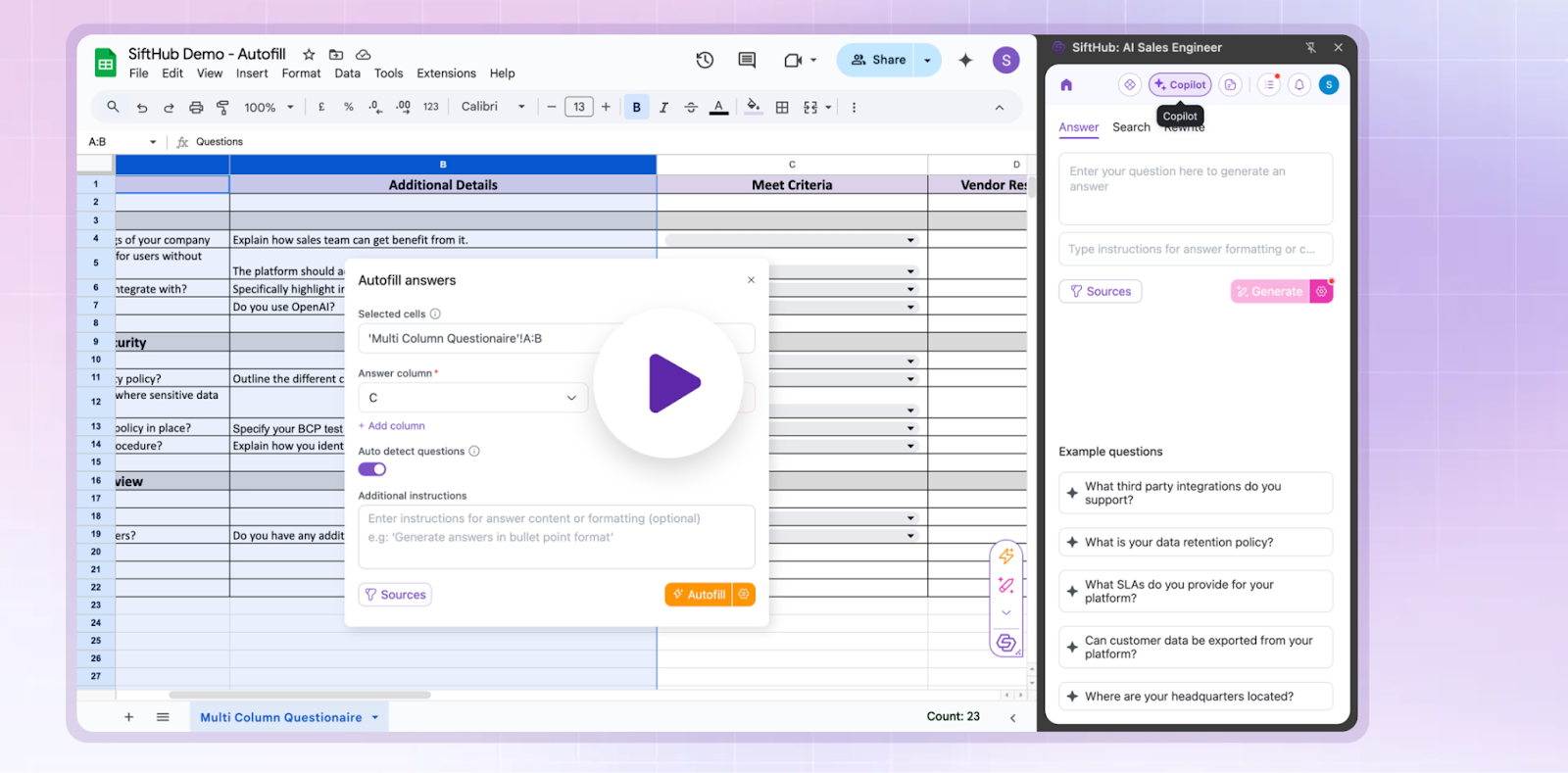
Design and content flexibility
Some proposal tools allow you to create documents from scratch using a flexible drag-and-drop editor, while others offer a ready-made proposal template library with reusable content blocks. Look for a professional proposal software that supports embedded videos, maps, pricing tables, and branding elements, so your team can craft visually engaging, on-brand proposals every time.
If your sales reps need to move fast, consider a platform with AI-powered proposal generation and smart content suggestions to cut creation time without sacrificing quality.
Collaboration and teamwork
If your proposal process involves multiple stakeholders, like sales, marketing, or legal, look for sales proposal software with collaboration features built in. This includes approval workflows, user permissions, version control, and team collaboration tools like inline comments or real-time editing.
Whether you’re a small business or a large team, managing who can access, edit, or approve each proposal section is key to ensuring consistency and reducing back-and-forth.
Proposal management: From send to signature
Once your proposal is ready, managing what happens next is just as important. A good proposal management software gives you visibility, control, and automation across the closing process.
Document tracking & analytics
Top tools offer real-time tracking, so you know exactly when a prospect views your sales proposal, how long they spend on each page, and what they engaged with most. This level of proposal analytics can accelerate your sales cycle, improve follow-up timing, and increase your chances of closing deals.
Engagement features
Modern online proposal software now includes advanced engagement tools, like embedded video, clickable pricing tables, interactive proposals, and live chat widgets. Some even support automated reminders, SMS nudges, or remarketing options to re-engage prospects who dropped off mid-process.
These features make winning proposals more interactive, memorable, and persuasive.
E-signature & approval workflows
Built-in electronic signature functionality speeds up the buying process, helping you get documents signed within days or even hours. The best sales proposal automation platforms also offer dual-sided approval workflows so both your team and the buyer can sign off efficiently.
Performance reporting
Look for platforms with centralized dashboards, where you can track key proposal metrics, such as open rates, conversion rates, time to close, and overall win rates. Reporting helps identify bottlenecks and monitor team performance, making it easier to optimize your proposal process over time.
Read from McKinsey on reaching excellence in software procurement.
Proposal management: Choose a solution that meets your workflow
While many tools focus heavily on proposal creation, others shine in the proposal management space. Your ideal software depends on your team’s specific needs.
- If you already love your design tool but want better tracking and analytics, choose a platform that focuses on document management and engagement analytics.
- If your team needs help scaling content creation, prioritize tools with content libraries, proposal automation, and proposal templates.
- If security and control are your top concerns, look for enterprise-ready proposal platforms that offer document lifecycle management, secure sharing, and custom branding.
How to make a proposal
Knowing how to make a proposal that converts is essential for sales reps, marketers, and proposal managers. It’s not just about writing well; it’s about aligning your offer to buyer needs and presenting it with clarity, speed, and impact. From quote generation to proposal tracking, every part of the process should be streamlined to win.
Here’s a complete breakdown of what goes into building high-performing proposals, along with how the best proposal automation software and proposal generator software can enhance every step.
Step 1: Understand buyer needs and decision criteria
Start with the fundamentals:
- Buyer pain points and business goals
- RFP criteria, timelines, and stakeholder roles
- Budget constraints and procurement workflows
Many tools now assist with automated prompt generation, extracting buyer priorities from CRM data and discovery notes. This makes it easier to tailor your message from the outset.
Step 2: Build a clear and persuasive structure
Your proposal should include:
- Executive Summary
- Problem & Opportunity Framing
- Proposed Solution
- Configure Price Quote (CPQ) Breakdown
- Implementation Plan
- Case Studies or Social Proof
- Next Steps and Contact Details
Quote generation capabilities within proposal software let you insert dynamic pricing tables and CPQ outputs directly into your proposal, minimizing errors and increasing speed.
Step 3: Collaborate with internal teams
Sales, legal, marketing, and product must all weigh in. That’s where real-time collaboration, user permissions, and content version control come into play. The best proposal automation software helps centralize all inputs without bottlenecks.

How to use a proposal generator software
Today’s proposal generator software platforms, also known as proposal automation platforms, go far beyond static templates; they combine automation, intelligence, and collaboration features to support the full proposal lifecycle, from draft to delivery and digital signature. Whether you’re responding to an RFP, sending a sales proposal, or building a custom quote, these tools streamline the entire process.
Here’s how to make the most of modern proposal generation tools:
1. Start with an industry-ready template
Most proposal software platforms come with customizable, professional templates tailored to your industry. These templates take the guesswork out of formatting, tone, and structure, so you can focus on strategy and personalization instead of layout.
Here are a few proposal templates you can look at.
2. Auto-populate with CRM and deal data
Leading tools integrate directly with your CRM, pulling in details like customer name, deal value, stage, and timeline. This automation not only speeds up quote generation but also reduces human error and ensures proposal accuracy.
3. Use AI-powered prompting to draft faster
AI-driven proposal software often includes smart prompts that help draft key sections like executive summaries, customer challenges, and win themes, based on CRM notes, past proposals, or deal context. This significantly reduces the time spent writing repetitive content while improving consistency.
4. Add dynamic pricing with CPQ integration
For sales teams managing complex deals, configure price quote (CPQ) capabilities are essential. Proposal software with built-in CPQ features allows you to create custom pricing tables, auto-calculate totals, apply discounts, and instantly reflect updates across the document. This ensures pricing accuracy without requiring manual recalculations.
5. Set and enforce user permissions
Proposal creation is a cross-functional process involving sales, legal, marketing, and technical teams. Top-tier tools offer granular user permissions so that only authorized team members can view, edit, or approve certain sections. This avoids bottlenecks while maintaining quality and compliance.
6. Prioritize security and compliance
When proposals contain sensitive pricing, legal terms, or customer data, security features become critical. Look for solutions that offer enterprise-grade encryption, password-protected documents, access expiration, and audit trails. These protections are especially vital for industries like finance, healthcare, and government contracting.
7. Track proposal engagement in real-time
Don’t guess whether your proposal landed well, proposal tracking features give you real-time visibility into buyer behavior. Get alerts when a proposal is opened, see which sections are viewed the most, and monitor if it’s forwarded internally. These insights help your team follow up more strategically and close deals faster.
Final thoughts: Why proposal software is no longer optional
Gone are the days when proposal writing was a manual, disconnected process. Whether you’re a startup founder sending five proposals a week or an enterprise managing hundreds of RFPs, the right proposal automation software gives your team a competitive edge, faster turnaround, better presentation, and more winning proposals.
Each tool we covered, SiftHub, Proposify, Qwilr, Better Proposals, and Responsive.io, caters to different needs. Whether you need design flexibility, workflow automation, or deep enterprise control, there’s a solution built for you.
Looking for a smarter way to scale proposal generation? Start with SiftHub and experience the future of sales proposal automation, powered by AI, built for speed. Try SiftHub today.
FAQs on the best proposal software tools
1. Who are proposal managers?
Proposal managers are the strategic leads responsible for creating, managing, and delivering compelling business proposals that help organizations win new deals. They work closely with sales, presales, marketing, legal, and product teams to gather the right content, tailor messaging to each opportunity, and ensure every proposal aligns with the company’s value proposition and client requirements.
In fast-paced sales environments, proposal managers also play a critical role in process management, including setting timelines, coordinating reviews, managing approval workflows, and maintaining a central content library.
2. What are the core responsibilities of a proposal manager?
- Analyzing RFPs and client requirements
- Coordinating inputs from multiple stakeholders
- Creating and customizing proposals using automation tools
- Managing version control, branding, and compliance
- Tracking deadlines and ensuring timely submissions
- Measuring proposal performance and win rates
With modern AI-powered proposal automation software, proposal managers can shift from manual formatting and chasing inputs to higher-value work, like improving proposal strategy, personalization, and conversion rates.
3. How can AI proposal software help boost productivity for proposal managers?
AI proposal software significantly enhances productivity by automating repetitive tasks, streamlining workflows, and reducing the time spent on manual formatting or content hunting. With features like:
- Automated prompt generators that draft content based on deal data, CRM notes and company knowledge base
- Quote generation tools that pull pricing and terms dynamically
- Smart content libraries that reuse approved proposal sections
- Proposal tracking to monitor engagement and prioritize follow-ups
…proposal managers can focus more on strategy and quality assurance rather than administration. The best AI-powered proposal automation software also ensures consistency across proposals, supports team collaboration with user permissions, and maintains compliance with built-in security features, saving hours on every deal cycle.
4. What is proposal software?
Proposal software is a digital solution that helps businesses create, manage, and track professional proposals. Unlike manual processes, the best proposal software comes with templates, automation features, and integrations that speed up the proposal creation process and improve accuracy.
5. What is the best proposal software for small businesses?
The best proposal software for small businesses is one that combines ease of use with affordability. Small teams often prefer proposal software platforms that include drag-and-drop editors, ready-made templates, and proposal status tracking without requiring complex setup.
6. What is the best free proposal software?
The best free proposal software options usually offer limited templates, basic proposal generator tools, and simple collaboration features. While great for freelancers or startups, businesses often upgrade to paid versions for advanced proposal analytics dashboards, proposal engagement metrics, and sales pipeline integration.
7. Which is the best proposal management software?
The best proposal management software allows teams to centralize content, manage approvals, and collaborate seamlessly across departments. Proposal management software tools often include features like proposal creation process automation, content libraries, and proposal analytics dashboards to track performance.
8. What is the best business proposal software?
The best business proposal software is designed for scaling organizations that need robust workflows, team collaboration, and integration with CRM systems. Look for proposal software features like proposal status tracking, version control, and sales pipeline integration.
9. What is the best proposal automation software?
The best proposal automation software reduces manual effort by autofilling responses, suggesting proposal templates, and streamlining approvals. Businesses using proposal automation benefit from faster turnaround times and higher consistency in proposal creation.
10. What are the best proposal software platforms available today?
Some of the best proposal software platforms include solutions tailored for both small businesses and enterprises. These platforms offer proposal generator tools, customizable templates, proposal analytics dashboards, and integrations with CRM systems for a seamless sales workflow.
11. What is the best proposal software for freelancers?
Freelancers often look for lightweight, affordable tools. The best proposal software for freelancers includes features like customizable templates, e-signatures, and simple proposal status tracking without unnecessary complexity.
12. What are the best proposal software solutions overall?
The best proposal software solutions combine automation, collaboration, and analytics. From freelancers to enterprises, businesses benefit from proposal generator tools, proposal engagement metrics, and integration with the sales pipeline, resulting in a more predictable proposal creation process.
13. How do proposal software features support the proposal creation process?
Proposal software features like content libraries, proposal analytics dashboards, and proposal status tracking help teams streamline the proposal creation process. These tools ensure proposals are accurate, personalized, and delivered on time, while also providing insights into client engagement.


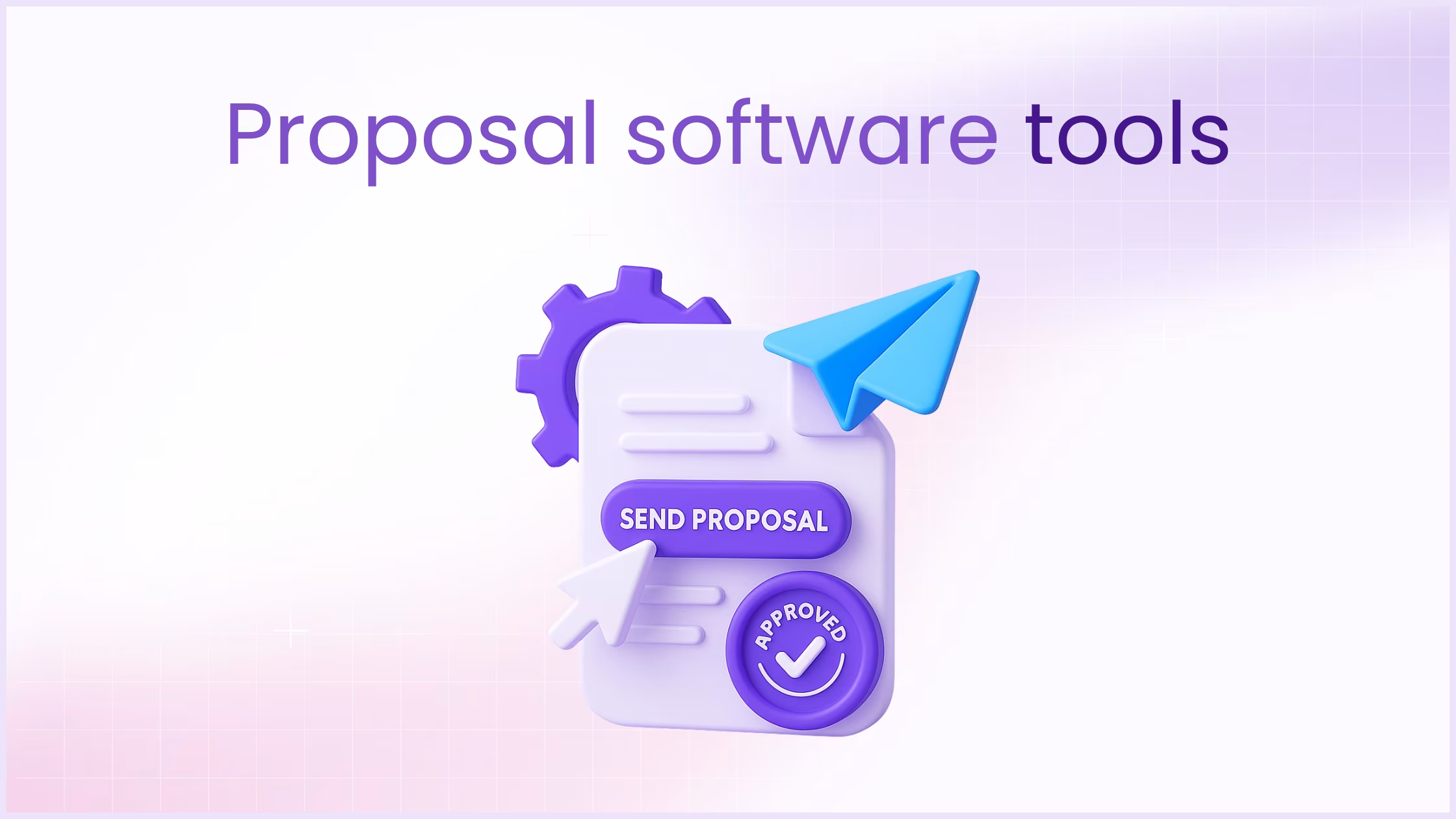





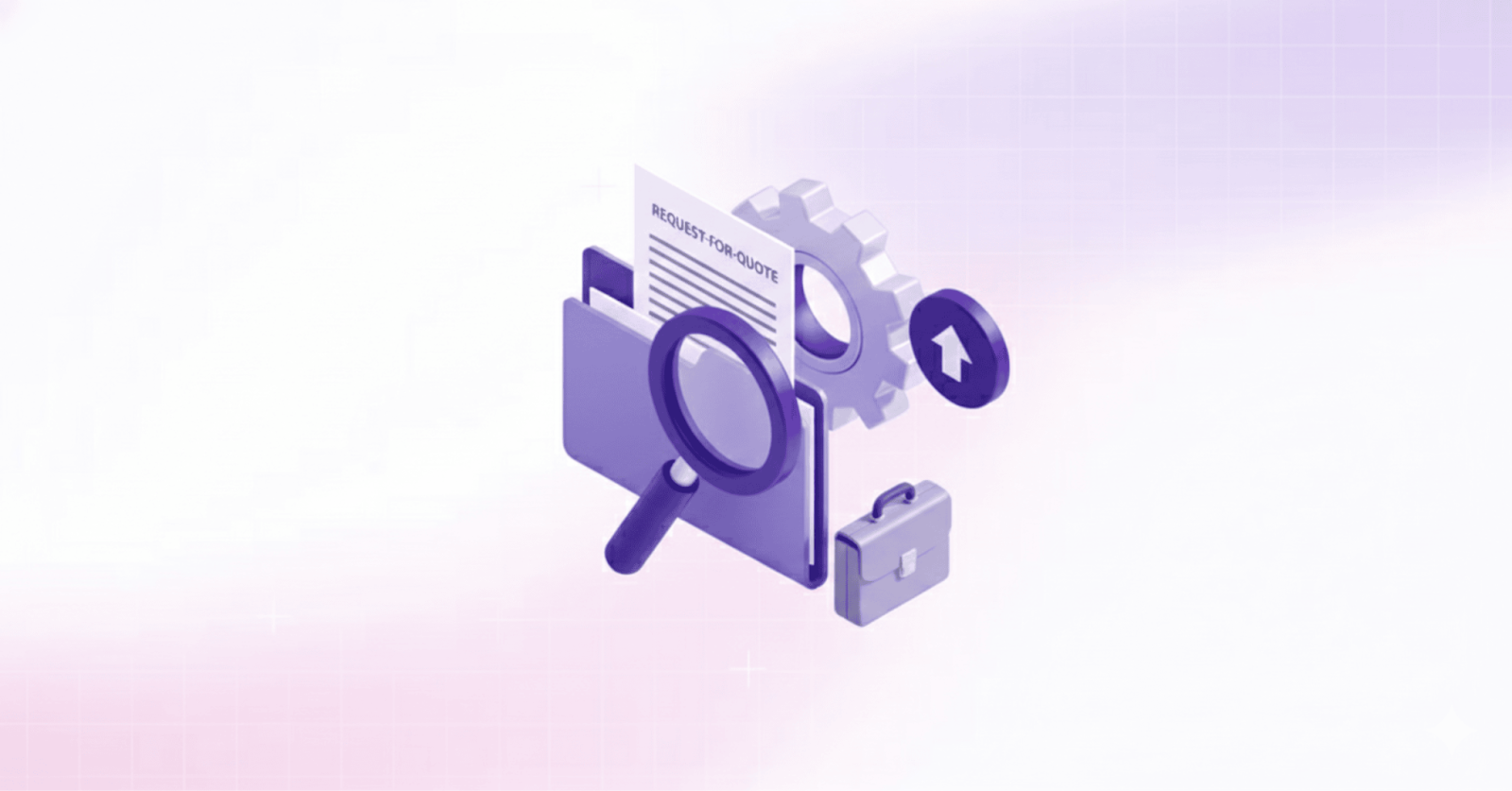
.avif)
